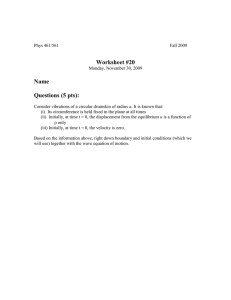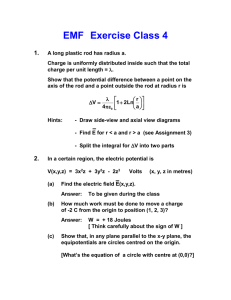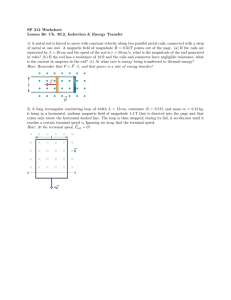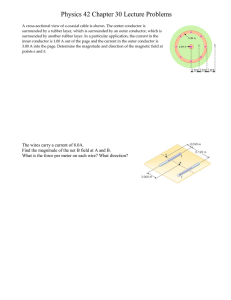Homework #6
advertisement
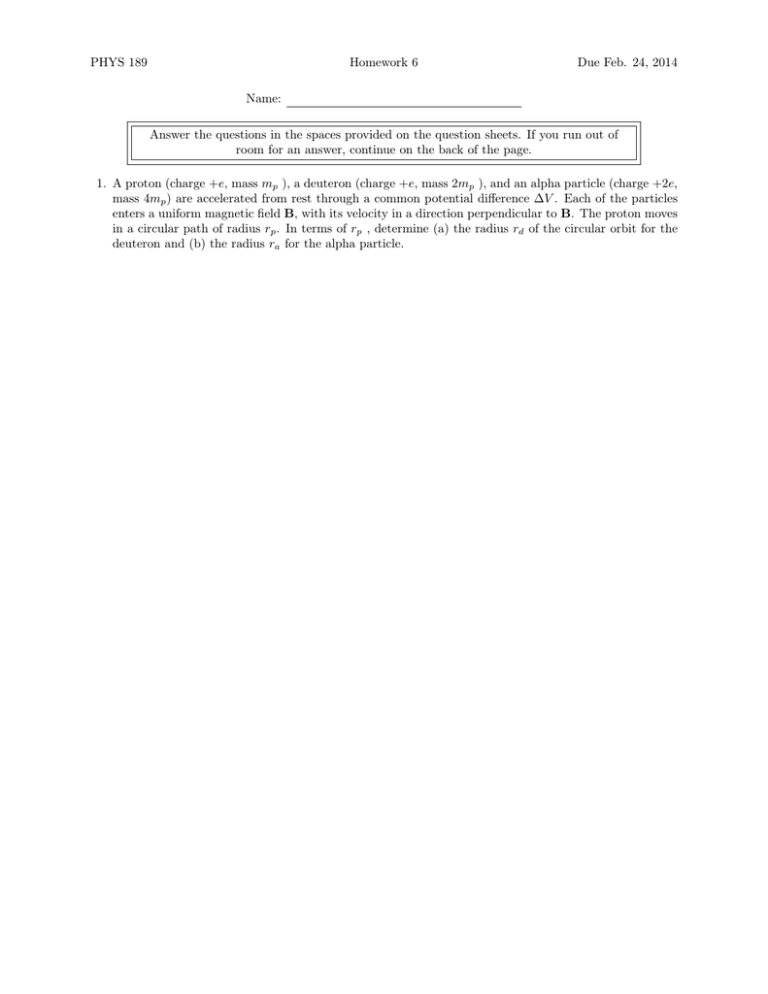
PHYS 189 Homework 6 Due Feb. 24, 2014 Name: Answer the questions in the spaces provided on the question sheets. If you run out of room for an answer, continue on the back of the page. 1. A proton (charge +e, mass mp ), a deuteron (charge +e, mass 2mp ), and an alpha particle (charge +2e, mass 4mp ) are accelerated from rest through a common potential difference ∆V . Each of the particles enters a uniform magnetic field B, with its velocity in a direction perpendicular to B. The proton moves in a circular path of radius rp . In terms of rp , determine (a) the radius rd of the circular orbit for the deuteron and (b) the radius ra for the alpha particle. PHYS 189 Homework 6, Page 2 of 4 Due Feb 24, 2014 2. Singly charged uranium-238 ions are accelerated through a potential difference of 2.00 kV and enter a uniform magnetic field of magnitude 1.20 T directed perpendicular to their velocities. (a) Determine the radius of their circular path. (b) Repeat this calculation for uranium-235 ions. (c) How could this be useful information to you if, say, you were a UN inspector trying to determine the ratio of U-238 to U-235 in Iran’s refined uranium supply? PHYS 189 Homework 6, Page 3 of 4 Due Feb 24, 2014 3. A rod of mass 0.720 kg and radius 6.00 cm rests on two parallel rails (see figure) that are d = 12.0 cm apart and L = 45.0 cm long. The rod carries a current of I = 48.0 A in the direction shown and rolls along the rails without slipping. A uniform magnetic field of magnitude 0.240 T is directed perpendicular to the rod and the rails. If it starts from rest, what is the speed of the rod as it leaves the rails? PHYS 189 Homework 6, Page 4 of 4 Due Feb 24, 2014 4. Behold a cross-section of Coaxial cable above. The center conductor is surrounded by a rubber layer, an outer conductor, and another rubber layer. In a particular application, the current in the inner conductor is I1 = 1.00 A out of the page and the current in the outer conductor is I2 = 3.00 A into the page. Assuming the distance d = 1.00 mm, determine the magnitude and direction of the magnetic field at (a) point a and (b) point b. Hint: Use Ampere’s Law.
